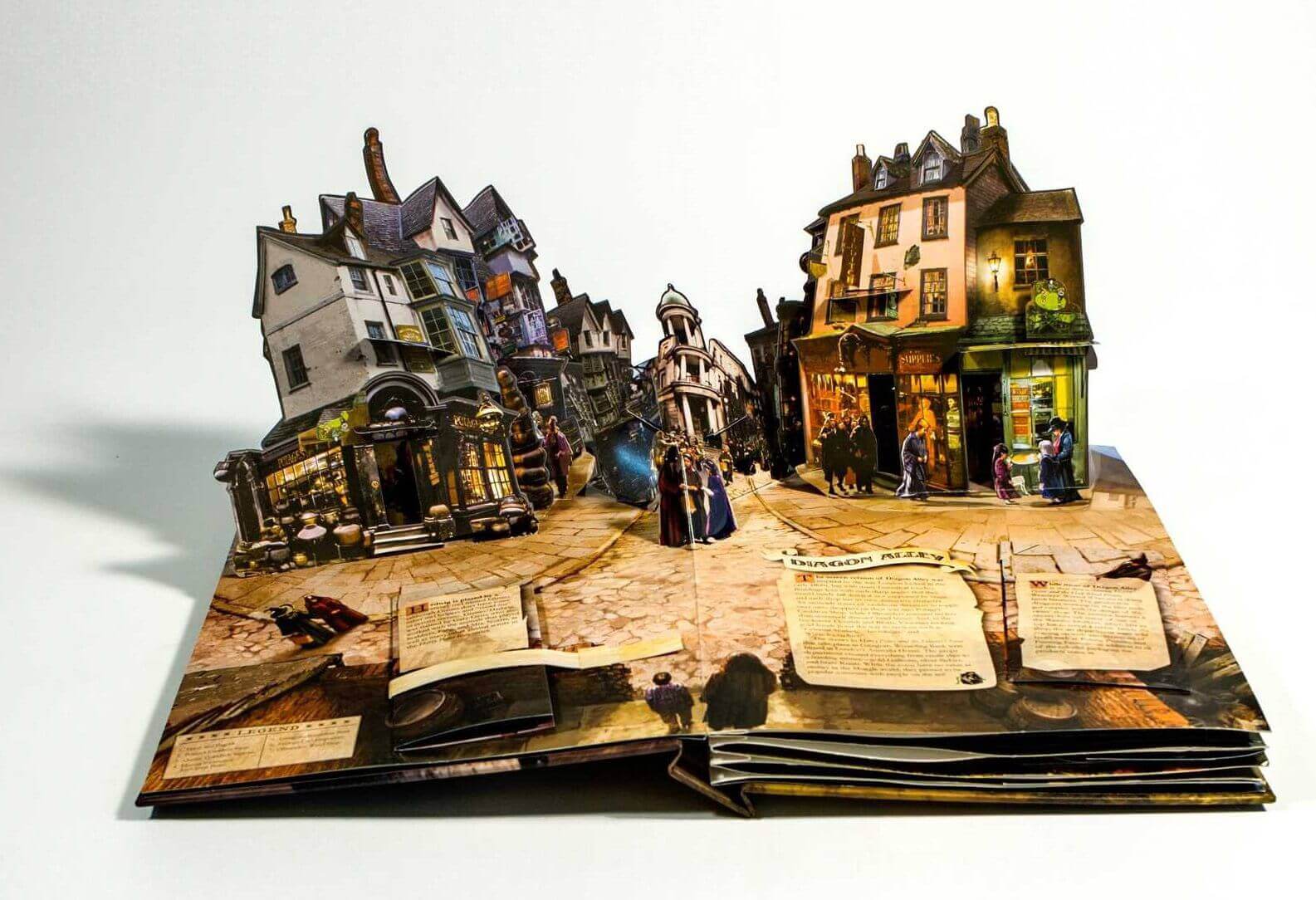
Blog
Enchanting Worlds Unfold: The Enduring Charm and History of Moveable Books

Moveable books, also known as pop-up books, interactive books, or mechanical books, have been captivating readers of all ages for over 700 years. These books are unique in that they contain movable parts, such as tabs, flaps, pull-tabs, or wheels, which allow the reader to interact with the illustrations and story in a playful and engaging way.
The origin of moveable books can be traced back to the 13th century in China, where paper engineers created moveable paper puppets and other paper toys. The Chinese also invented the first movable book, called the “magic book,” which featured a series of overlapping paper pages that could be manipulated to create different images.
Moveable books eventually made their way to Europe, where they were used for religious and educational purposes. One of the earliest known moveable books in Europe was a volvelle, which was a type of circular chart used for astronomical calculations. These volvelles were often decorated with intricate illustrations and were highly prized by scholars and astronomers.
In the 16th century, the printing press made it possible to mass-produce books, including moveable books. One of the earliest known examples of a printed moveable book is the “Cosmographia” by Sebastian Münster, which was published in 1544. This book contained a series of fold-out maps that could be manipulated to show different regions and landmarks.
In the 18th and 19th centuries, moveable books became increasingly popular, especially in children’s literature. One of the most famous examples of a moveable book from this time period is “The Adventures of Pinocchio,” which was first published in Italy in 1883. This book contained a series of intricate pop-up illustrations, including a moving clock and a dancing puppet.
Moveable books continued to evolve in the 20th century, with many new techniques and technologies being used to create more complex and interactive designs. Some of the most famous moveable books from this time period include “The Very Hungry Caterpillar” by Eric Carle and “The Little Prince” by Antoine de Saint-Exupéry.
Moveable books have also become an important part of popular culture, with many movies and television shows featuring characters interacting with moveable books. One of the most famous examples of this is the movie “Hugo,” which is based on the book “The Invention of Hugo Cabret” by Brian Selznick. In this movie, the main character interacts with a variety of intricate and beautiful moveable books, including a mechanical man and a flying bird.
Today, moveable books are still highly prized by collectors and readers of all ages. Many artists and designers continue to experiment with new techniques and materials to create innovative and exciting moveable books. These books offer a unique and immersive reading experience that engages the reader’s imagination and encourages them to explore the world in a playful and interactive way.
In addition to their entertainment value, moveable books also offer important educational and cultural benefits. They can be used to teach children about science, history, and other subjects in a fun and engaging way. They can also be used to promote cultural awareness and understanding, by featuring stories and illustrations from different cultures and traditions.
Overall, moveable books have a rich and fascinating history that spans centuries and continents. From their humble beginnings in China to their current popularity in modern culture, these books have captured the imagination of readers around the world and continue to inspire creativity and innovation in the world of literature and design.





 Christmas
Christmas Father’s Day
Father’s Day Valentine’s Day
Valentine’s Day Easter
Easter Thanksgiving
Thanksgiving Halloween
Halloween
 Birthday
Birthday Wedding
Wedding Anniversary
Anniversary Graduation
Graduation Baby Shower
Baby Shower House Warming
House Warming
 For Him
For Him For Her
For Her For Kids
For Kids
 Floral
Floral Animals
Animals Trees
Trees Architecture
Architecture Vehicle
Vehicle LGBTQ+
LGBTQ+ Just Because
Just Because
 Pop-up Box
Pop-up Box Pop-up Stand
Pop-up Stand